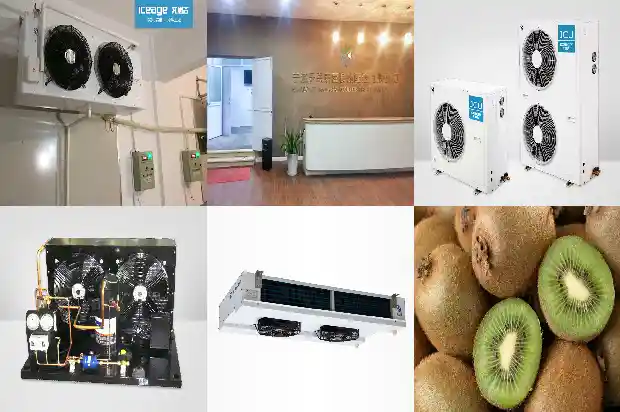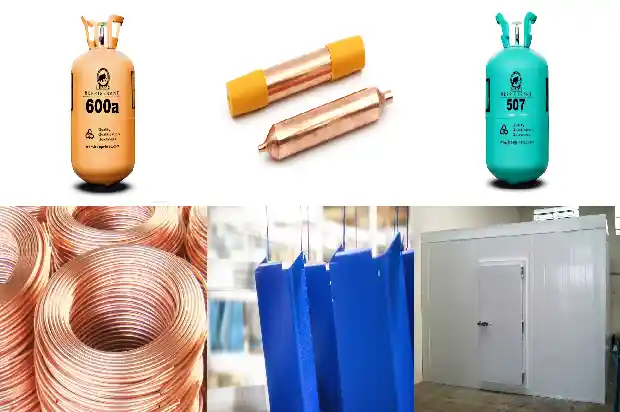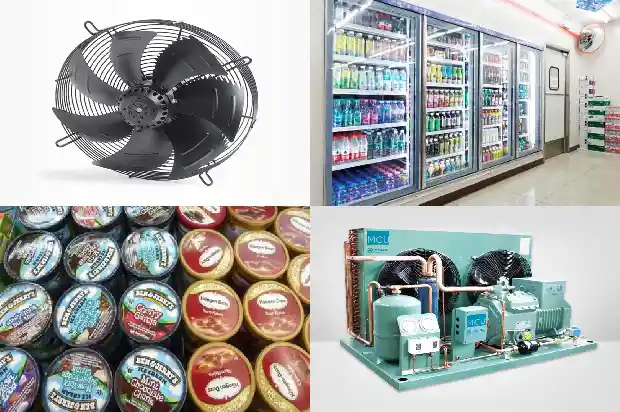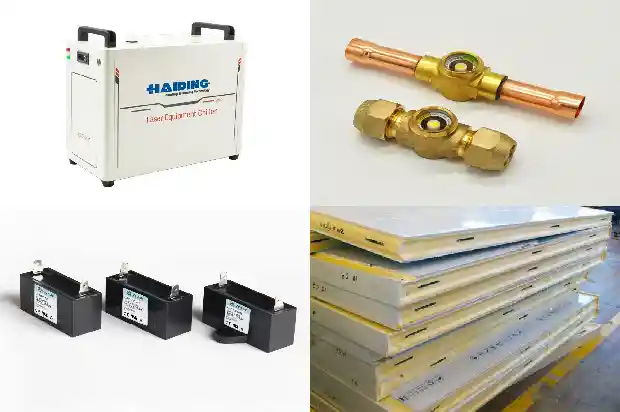Safe Use and Emergency Handling of Common Refrigerants
2025-04-15
R22: Currently, R22, namely difluorochloromethane, is the most widely used. R22 is a colorless, odorless, non-toxic, and non-corrosive gas with stable chemical properties. It is not easy to burn or explode. Its relative density is 1.18 (water = 1), and the relative vapor density is 3.
R134a is a very low-toxic, fluorine-free, non-flammable refrigerant in the air, with a safety class of A1, and it is a very safe low-temperature refrigerant.
R407C is a mixture of R32 refrigerant, R125 refrigerant, and R134a refrigerant in a certain proportion. It is an environmentally friendly, low-toxic, non-flammable, and safe refrigerant that does not damage the ozone layer.
Usage Precautions:
Risks of Freon Accidents:

R134a is a very low-toxic, fluorine-free, non-flammable refrigerant in the air, with a safety class of A1, and it is a very safe low-temperature refrigerant.
R407C is a mixture of R32 refrigerant, R125 refrigerant, and R134a refrigerant in a certain proportion. It is an environmentally friendly, low-toxic, non-flammable, and safe refrigerant that does not damage the ozone layer.
Usage Precautions:
Risks of Freon Accidents:
- Freon itself is non-toxic and is an asphyxiating gas. Freon is heavier than air. After a leak occurs, it will stay in lower places and areas with poor ventilation. When mixed with air to a certain concentration, it will cause environmental oxygen deficiency. If a person stays in this environment, it can lead to asphyxiation due to oxygen deficiency. Inhaling a large amount or for a long time will inhibit respiratory function, leading to coma or even death.
- When Freon meets an open flame and under the action of water vapor, etc., it can decompose to generate toxic and harmful gases such as phosgene, hydrogen chloride, and hydrogen fluoride, which can cause poisoning.
- Direct contact with liquid Freon can cause frostbite to personnel.
- If the container or gas cylinder storing Freon is exposed to high heat, the internal pressure will increase, and there is a risk of cracking and physical explosion.
R407C and R134a: - Avoid entering highly concentrated water vapor. Although such refrigerants are not easy to burn under normal temperature and pressure conditions, under high-pressure and high-concentration air conditions, their mixtures can burn. Refrigerants should be stored away from fire sources and hot metal surfaces.
- The refrigerants of R407C and R134a are of low toxicity, but inhaling a high dose of R407C will lead to anesthesia, and a very high concentration will lead to abnormal heart rhythm and sudden death. When the concentration of R407C and R134a refrigerants in the atmosphere is high, asphyxiation will occur due to oxygen deficiency.
- Contact of the eyes, hands, and skin with the refrigerant will cause frostbite.
- The gas mixture with air should not be used for pressure and leak detection tests.
- Do not overheat the reservoir containing the refrigerant. Thermal decomposition will produce steam with strong toxicity and (strong corrosiveness for R407C) (irritation for R134a). If overheated, the reservoir will explode.
- Do not strike or abuse the refrigerant bottle.
- The refrigerant bottle must be placed vertically.
- Use a suitable wrench to open and close the valve of the refrigerant bottle.
Emergency Response Measures for Leakage:
R22: - When there is a Freon leak in the refrigeration system, the operator should quickly stop the unit from running, cut off the power supply, confirm the leakage point (use a refrigerant leak detector to detect the leak if necessary), and close the valves at the front and rear ends of the leakage point as much as possible, and cut off the valves connected to the system.
- Open the doors and windows for ventilation, quickly evacuate the personnel in the leakage area to the upwind side, and isolate the area, strictly restricting access.
- Notify the department head and maintenance personnel.
- The department head organizes personnel to arrive at the scene to handle the accident, and promptly carry out reasonable exhaust ventilation in the leakage area to accelerate the diffusion.
- The on-site emergency rescue personnel should not blindly enter the leakage site. When they must enter the high-concentration leakage area to cut off the leakage source and carry out leak plugging operations, the emergency rescue personnel need to wear self-contained positive-pressure air breathing apparatus.
- When welding facilities such as the leaking pipeline, the Freon should be completely discharged. The leaking container should be properly handled and reused after repair and inspection.
- When the leaked Freon in the area has not been completely treated, open-fire operations are prohibited in the area.
- When dealing with the leakage point, pay attention to preventing maintenance personnel from being frostbitten by the leaked refrigerant.
- If someone inhales Freon, they should be quickly removed from the site to a place with fresh air, keep the respiratory tract unobstructed, call the emergency number. If there is difficulty in breathing, give oxygen.
If breathing stops, immediately carry out artificial respiration.
- Once the skin is frostbitten due to contact with Freon, immediately rinse with a large amount of clean water for at least 15 minutes and seek medical attention.
- Once the eyes come into contact with liquid Freon, immediately rinse with a large amount of clean water for at least 15 minutes and seek medical attention.
R407C and R134a:
A. Inhalation: Inhalation of low concentration has an irritating effect on the mucous membrane. A high concentration of R407C in the atmosphere will lead to anesthesia, including loss of consciousness. Extremely high inhalation will lead to abnormal heart rate and sudden death.
Acute Poisoning: Mild cases are manifested as irritation reactions of the skin and mucous membrane, such as rhinitis, laryngitis, and tracheitis; there may be burns to the cornea and skin. Severe cases show laryngeal edema, glottic stenosis, exfoliation of respiratory tract mucosal cells, airway obstruction, and asphyxiation, and there may be toxic pulmonary edema and liver damage.
If accidentally inhaled, move the injured person away from the high-concentration area and let them recover in a warm place.
Provide oxygen if necessary. If breathing stops or gradually weakens, carry out artificial respiration and seek medical treatment nearby.
B. Skin Contact: Contact with splashed liquid may cause frostbite. If frostbite occurs: Immerse the affected part in warm water maintained at 38-42°C for rewarming. Do not rub. Do not use hot water or radiant heat. Change contaminated clothes. Wrap with a clean, dry dressing and seek medical attention.
Warning: After frostbite occurs, the clothes may stick to the skin.
C. Eye Contact: Splashed liquid may cause frostbite, turbidity of the lens, perforation of the cornea, and even blindness. If accidentally splashed into the eyes, immediately rinse with an eye wash or clean water for at least 15 minutes without closing the eyes. Seek medical attention immediately.
D. Ingestion: This situation is unlikely - but once it occurs, it will cause frostbite. Do not induce vomiting. If the injured person is still conscious, rinse the mouth with clean water and let them drink 200-300ml of water. Seek medical attention immediately.
E. Further Medical Treatment and Support: For R407C, since cardiotonic agents will cause heart disease, adrenaline and similar sympathomimetic drugs should be avoided.
When the refrigerant leaks, a large amount of smoke will emerge from the leakage point, and there will be a strong pungent smell in the surrounding environment; the equipment and pipelines at the leakage point will be cold, and severe freezing will occur.
Protective Measures for Operators, Protective Equipment, and Emergency Response Procedures:
Designate a warning area according to the influence area of the gas, and unrelated personnel should evacuate from the crosswind and upwind directions to the safe area. For safety, stay away from the leakage site. It is recommended that emergency treatment personnel wear positive-pressure self-contained breathing apparatus and general work clothes. Do not touch or cross the leaked substance. Cut off the leakage source as much as possible. Spray water mist to suppress the vapor or change the direction of the vapor cloud, and avoid the water flow from contacting the leaked substance. Do not directly impact the leaked substance or the leakage source with water.
Environmental Protection Measures:
Cut off the leakage source as much as possible. If the ventilation is good, a small amount of the spillage can be evaporated. If the spillage is large, ventilate the area and cover it with sand or other suitable absorbent materials.
Prevent the liquid from entering the drainage pipes, sewers, basements, or work pits, and prevent the gas from diffusing through sewers, ventilation systems, and enclosed spaces, because its vapor will cause asphyxiation.
Methods for Containing and Removing the Leaked Chemicals and the Disposal Materials Used:
The leaked gas is allowed to be discharged into the atmosphere. Keep the leakage site ventilated. If there is a fire, use a fire extinguishing medium to put out the fire. Flush water onto the refrigerant tank to cool it; or use a fire extinguishing device.
Related Articles
- What Knowledge Points Should Users Know about the Safety Valve in the Refrigeration System?
- Introduction to the Construction Technology of Garlic Fresh - keeping Warehouse
- A Brief Analysis of the Causes of Condenser Surface Temperature Rise
- Can a Tiny Copper Tube Cause a Multi - Split Air Conditioner to Stop Cooling?
- What Causes the Evaporation Temperature in a Cold Storage Refrigeration System to Be Too Low?
- What Are the Differences Among Freezer Warehouses, Quick - freezing Warehouses and Fresh - keeping Warehouses?
- Classification and Uses of Common Refrigerants
- Analysis of Causes for Exhaust Malfunctions of Screw - type Chiller Compressors
- Common Causes of Damage to Scroll Compressors
- Abnormal Phenomena and Causes during the Operation of Reciprocating Refrigeration Compressors
- Analysis of the Causes of Frost Formation at the Suction Port of the Refrigeration Compressor
- What Are the Commonly Used Refrigerants in Refrigerators and Cold Storages?
- The Most Comprehensive Knowledge of Refrigeration Oil, Definitely Useful in the Future!
- The Use and Common Maintenance Methods of Refrigeration Compressors
- Brief Analysis of Commonly Used Automatic Control Devices in the Refrigeration System
- Common Fault Causes and Solutions of Cold Storage Systems
- Pipelines Used in the Refrigeration System
- How Do You Remove Mildew from the Cold Storage? Have You Used These Methods?
